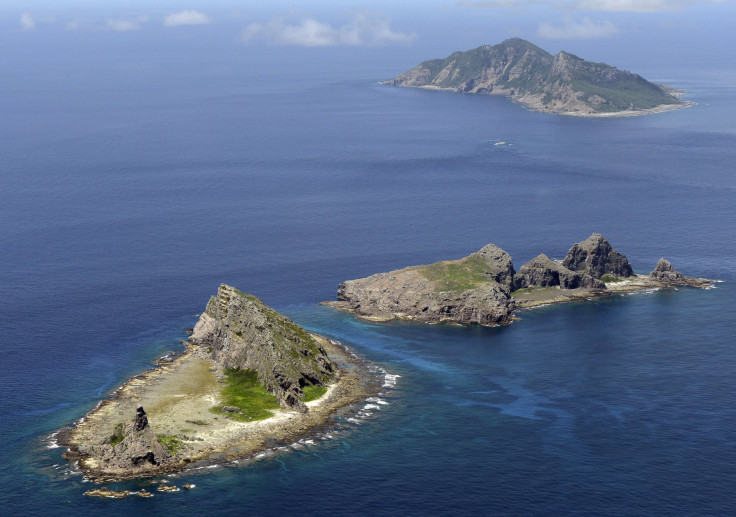East China Sea Tensions: Beijing Demands Japanese Boats Stay Away From Disputed Islands

KEY POINTS
- China lodged a complaint about Japanese fishing boats “trespassing” near the Senkaku/Diaoyu Islands
- Japan rejected the Chinese demands to leave as “unacceptable”
- The Islands are administered by Japan
China and Japan continue to jostle over a small rocky chain of islands in the East China Sea. Claimed by both countries, they are known as the Senkaku Islands by Japan and the Diaoyu Islands by China.
They are located approximately halfway between Japan's Okinawa and the Chinese eastern coast. Taipei, in northern Taiwan, is the closest city to the islets.
Diplomatic sources familiar with Sino-Japanese relations told The Japan Times that earlier this month, China lodged a complaint about Japanese fishing boats “trespassing” near the islands. Japan immediately rejected the Chinese demands to leave as “unacceptable” since the Senkaku Islands are administered by Japan.
China made another demand for Japan to nullify a June 22 resolution passed by the city assembly of Ishigaki to change the name of an area in southern Japan from “Tonoshiro” to “Tonoshiro Senkaku.”
Beijing calls the renaming an attempt by Tokyo to “cement” Japan’s claim over the islands while China’s demand for nullification is seen by Tokyo as part of its efforts to weaken Japanese control.
The back and forth exchanges continued when Japan said the Ishigaki assembly’s decision cannot be changed and that the renaming will take effect Oct. 1.
That date is sure to draw ire from China as it coincides with the celebration of National Day of the People’s Republic of China. So far, their response has been to give names to some seabed zones in the East China Sea that are related to the Senkaku/ Diaoyu Islands. This has raised the hackles of some in Japan.
The strife goes back to the Treaty of Shimonoseki in 1895 when the Qing dynasty was soundly defeated by Japan. About 50 years later, the United States took over after Japan was defeated in World War 2. In 1972, the U.S. ended its occupation of Okinawa and the Ryukyu Island chain, which included the Senkaku Islands, leaving China and Japan to arrive at a solution. Japan continues to administer the islands today while China believes the 1895 treaty was voided after WW2.
In recent months, Chinese activities near the disputed island chain have intensified. The most recent incident was the June 4 intrusion of two China Coast Guard ships into Japanese territorial waters for a record 39 hours and 23 minutes, the longest stint since September 2012.
That brought a response from Tokyo six days later when it protested over marine research activity by a Chinese ship in what Japan regards as its exclusive economic zone (EEZ) near Okinotorishima, the country’s southernmost point of territory.
China jabbed back Friday, July 17, with Foreign Ministry spokeswoman Hua Chunying saying, “Japan’s unilateral claim (to an EEZ) around Okinotorishima) has no legal basis” as it does not constitute an island, only rocks.
Until the situation is resolved, China will likely continue to track the movements of Japanese fishing boats and Japan will continue to be vigilant as China attempts to change the status quo. If they get too aggressive, the U.S. is bound to defend Japan under their Treaty of Mutual Cooperation and Security.
© Copyright IBTimes 2025. All rights reserved.





















